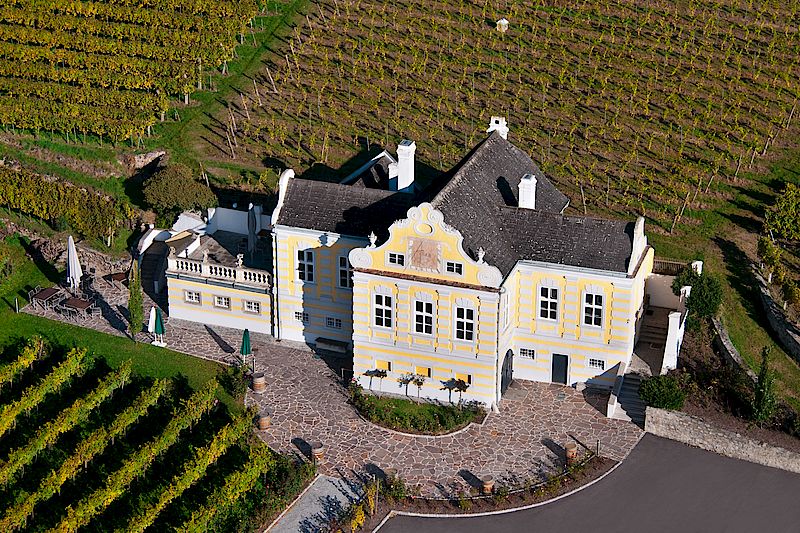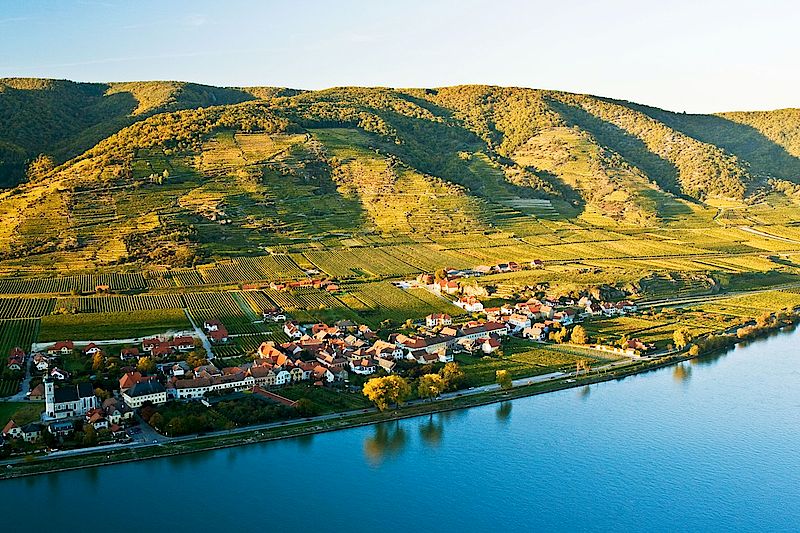UNESCO-World-heritage
The Wachau is a valley only about 33 km long, its landscape characterized by stone terraces, the castle-fortified mountains, its wine and fruit cultures, its special abundance of plants and animals as well as its customs is unique in Europe. That is why the Wachau was also named a UNESCO World Heritage Site.
The people in the Wachau have been growing wine for centuries. Primeval rock soils, Danube terraces and the special climate of the Wachau have a major influence on the high quality of the wines.


Soil and Geology
The soils of the Wachau show diverse characteristics despite their geographically small extent. The specialty of the Wachau landscape came about because the Danube had to make its way through hard, crystalline primary rock. These oldest rocks in Austria, the “Bohemian Mass”, are the remaining base of an ancient mountain range. Gföhler gneiss and paragneiss from the Wachau were formerly deep rock or sediments that changed under great pressure and heat in the earth’s mantle and now form the basis of the Wachau soils. Gneisses are rich in quartz and also contain minerals such as mica and feldspar. Wines from vineyards on these soils are characterized by precise mineral notes and elegant fruit.
Climate in the Wachau
The Wachau is a narrow valley between the heights of the Waldviertel (700 – 1000 m) and the Dunkelsteiner Forest (500 – 700 m). The valley is shielded from the north and west by the sunk narrow valley of the Danube and has a particularly favorable climate: similar climatic conditions only exist much further south, which means that a unique flora and fauna has developed here. This is also the reason why viticulture established itself as the dominant cultivation very early on, also due to the weathered primary rock soils that exist here.
The special climate of the Wachau has a major influence on the high quality of the wines, with two major climate zones influencing the local climate:
Atlantic air penetrates from the west, giving the climate of the Wachau a temperate continental character: cold winters and hot, dry summers. Large heat accumulations are prevented by the Danube stream, whose water masses have a temperature-regulating effect, especially in summer.
Warm Pannonian air masses flow into the Danube valley from the east and soften the climate, especially in the cold half of the year. In favorable years, the grapes can ripen on the vine until late November – a prerequisite for the emerald wines valued all over the world. Small climatic factors such as the fragrant forest air from the north and cool downward winds increase the temperature fluctuations between day and night. This promotes the development of aromas in the grape, especially in the weeks before harvest. The multi-layered fresh fruit of the classy Wachau wines is the result of these unique climatic conditions.






















